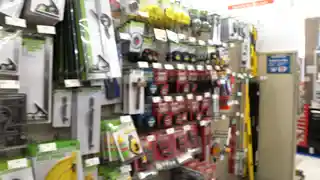Plumbing vents are the “unsung heroes” of your drainage system. They let sewer gases escape, keep water flowing freely through your pipes, and ensure that foul odors stay far away from your living areas. Below is an overview of how they work, why they matter, and the common issues that can arise if they’re blocked or improperly installed.
1. Purpose of Plumbing Vents
- Vent Sewer Gases
Plumbing vents allow built-up sewer gases to safely exit your home, usually through rooftop vent pipes. This helps maintain fresh indoor air. - Balance Air Pressure
Water in your drains needs proper air pressure to flow smoothly. A sealed system would trap air, causing slow drains or gurgling noises.
2. How Vents Prevent Dry Traps
- Water Seal
Each fixture has a P-trap designed to hold a small amount of water. This water barrier blocks sewer gases from entering your home. - Siphon Prevention
If your vent is blocked, draining water can create enough suction (like a vacuum) to pull water out of traps. Dry traps allow unpleasant odors or gases to back up into the living space.
3. Signs Your Vent May Be Blocked
- Gurgling Drains
When air struggles to flow through clogged vents, fixtures may emit a gurgling sound as air finds alternative paths. - Slow or Weak Flushing
Toilets might not fully evacuate waste if the system cannot equalize pressure. - Odors in Unused Fixtures
If a seldom-used sink or shower has a musty or sewer-like smell, the trap water may be evaporating or being siphoned out due to vent issues.
4. Common Causes of Clogs
- Animal or Debris Blockage
Birds can build nests or small critters can fall into vent pipes, blocking them from the top. - Leaves and Other Debris
Over time, leaves or windblown trash can accumulate inside vents, especially on flat or low-slope roofs. - Poor Installation
Incorrect vent sizing or pitch can impede air flow.
5. How to Clear or Prevent Vent Issues
- Periodic Inspection
Check vents yearly for visible debris or nesting. A quick rooftop look might save you from major drain problems later. - Use the Right Tools
Plumbers may run a small auger or tape down the vent to clear blockages. For severe clogs, a specialized camera or smoke test can locate trouble spots. - Maintain Traps
In seldom-used fixtures, periodically run water or flush to keep the P-trap seal intact.
6. Smoke Testing Explained
- What It Is
Plumbing systems are charged with non-toxic smoke that travels from the main sewer line into every drain and vent. - Why It Helps
Smoke escaping from unexpected places pinpoints leaks or breaks in the vent lines, ensuring the vent network is airtight and properly routed.
7. Key Takeaways
- Vents are critical for odor control and proper drainage.
- Simple maintenance and awareness can prevent vent clogs.
- If you notice unexplained sewer odors, gurgling fixtures, or slow drains, a blocked vent may be the culprit.
Plumbing vents often go unnoticed until something goes wrong, but understanding their function and how to keep them clear will save you plenty of frustration—and unpleasant smells—down the line. If in doubt, consult a licensed plumber to evaluate your venting system and ensure everything is up to code.





